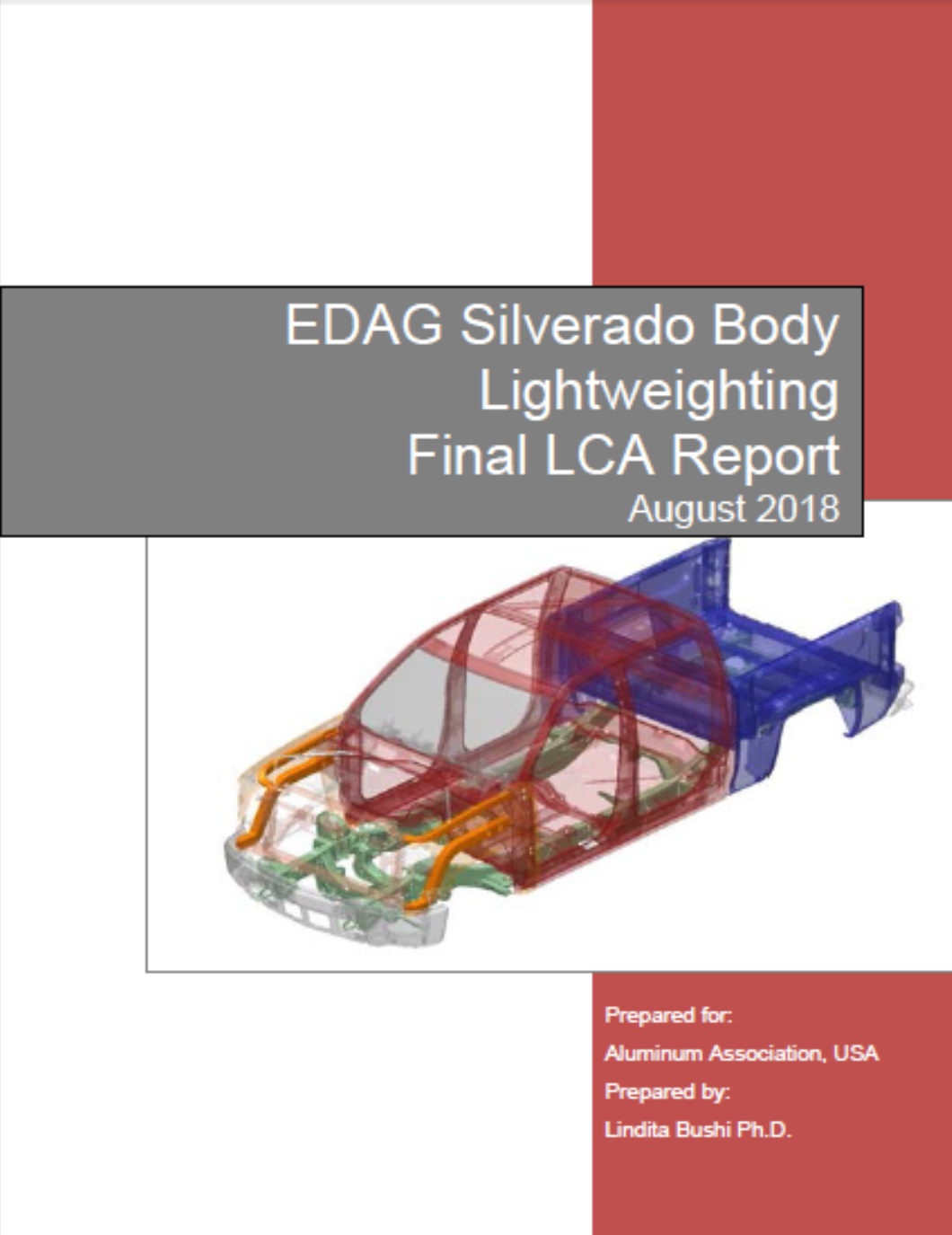 The Aluminum Association released LCA Report: EDAG Silverado Body Lightweighting, a new critically-reviewed study that highlights aluminum’s significant potential to reduce the environmental impact of automobiles when the full life cycle is considered.
The Aluminum Association released LCA Report: EDAG Silverado Body Lightweighting, a new critically-reviewed study that highlights aluminum’s significant potential to reduce the environmental impact of automobiles when the full life cycle is considered.
The life cycle assessment (LCA) examines cradle-to-grave environmental footprint reductions of an advanced aluminum pickup truck body design in comparison with a baseline design using high-strength steel (HSS) and advanced high-strength steel (AHSS). The study shows that the aluminum body offers the potential to lower a vehicle’s life cycle global warming potential and primary energy demand by 7.8 metric tons of CO2 equivalent and 110 gigajoules, respectively. This is equivalent to total energy savings of nearly 11 million barrels of oil over the lifetime of a 600,000-unit vehicle production fleet.
“This study again confirms aluminum offers the smallest total carbon footprint for the entire vehicle life cycle—well beyond just the tailpipe,” said Mario Greco, chairman of the Aluminum Transportation Group of the Aluminum Association. “Reducing carbon emissions generated during a vehicle’s life cycle is an important part of mitigating further climate change. Automotive aluminum is yet again proven to be the best material of choice to reduce vehicle weight and the related carbon footprint of new cars and trucks.”
The advanced aluminum body assessed in this LCA was designed by EDAG Inc. The design was commissioned by the Aluminum Association, building on EDAG’s previous work completed in 2016 for the National Highway Traffic Safety Administration (NHTSA). The advanced aluminum design reduces the body weight of a General Motors Silverado 1500 pickup truck (Model Year 2014) by 46% and is rigorously optimized to maintain or improve key functionality, including crashworthiness safety, structural stiffness and strength load.
The third-party conducted LCA study follows ISO 14040 series standards and adopts the most commonly agreed upon key assumption parameters and methodology choices recommended by the Canadian Standards Association (CSA) Group’s LCA guidelines on auto parts. Lindita Bushi, a prominent automotive LCA scientist, led the study. A panel of leading independent experts from organizations including thinkstep, UC Berkeley, and the Institute of Vehicle Concepts at the German Aerospace Center conducted the critical review process.
The results of this new LCA are consistent with prior independent studies by a number of organizations. In a 2014 peer-reviewed LCA, the U.S. Department of Energy’s Oak Ridge National Laboratory compared the full life cycle carbon emissions of two lightweight midsize crossover sports utility vehicles comprised of aluminum and AHSS, respectively. The study concluded aluminum offers the smallest total carbon footprint. Ford and Magna reached the same conclusion in 2015 with a study comparing an aluminum-intensive design of a midsize sedan with its AHSS-intensive counterpart.
“As the National Highway Traffic Safety Administration and Environmental Protection Agency work with the state of California, automakers, suppliers and others to determine the best path forward for future fuel economy and emissions regulations,” Greco continued. “It’s important to factor in aluminum’s attractiveness to both increase fuel economy and reduce emissions.”
